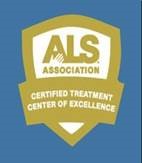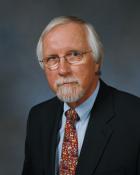Amyotrophic Lateral Sclerosis (ALS)

Amyotrophic lateral sclerosis (ALS), also referred to as Lou Gehrig’s disease, is a progressive motor neuron disease affecting the nerve cells in the brain and spinal cord. Motor neurons are small bundles of nerves that run from the brain to the spinal cord, then from the spinal cord to the muscles throughout the body.
The progressive degeneration of the motor neurons causes them to die, and the brain loses the connection with the muscle. The result is a lack of muscle control. This "disconnection" then causes the muscle to lose neuron nourishment and stimulation, resulting in muscle atrophy (becoming smaller).
Causes of ALS
In about 10 percent of cases, ALS is caused by an inherited genetic defect. In all other cases, the cause is unknown. ALS currently affects about five out of every 100,000 people worldwide.
There is no known risk factor for ALS, except for having a family member who has had the hereditary form of the disease. The biological mechanisms that cause ALS are only partially understood and may be due to a particular gene called SOD1. A mutation in this gene is thought to make a protein that is toxic to the motor nerve cells. Due to the accumulation of this toxin, people with ALS progressively lose the ability to function and care for themselves. They no longer have voluntary control over their muscles and eventually lose involuntary control that is required for vital organ systems.
Symptoms of ALS
The initial onset of ALS, symptoms may be so slight that they are frequently overlooked. Most symptoms develop later in adulthood, usually after the age of 50. However, they can occur in younger people.
People who experience ALS have a loss of muscle strength and coordination that gradually gets worse. Muscle weakness may occur in hands, arms or legs or the muscles of speech, swallowing and breathing. Often the early signs include twitching and muscle cramps, especially in the hands and feet. These signs can vary significantly from person to person.
Symptoms often begin with tripping or falling spells. For others, symptoms begin with slurred speech or episodes of crying or laughing.
Muscle weakness is the hallmark sign in ALS, occurring in approximately 60 percent of patients. Hands and feet may be affected first. Difficulty lifting items, buttoning clothes or walking are common signs.
As the disease begins to worsen, it spreads to the trunk muscles of the body. This leads to dysfunction or weakening of speech, swallowing, chewing and breathing.
When breathing muscles become affected, the patient will require permanent ventilator support to survive. These signs represent the end stage of the disease process.
ALS Treatment
ALS currently cannot be cured. Even though physicians cannot reverse the progression and symptoms of ALS, there have been considerable medical advances which extend and improve the life of patients with this disease. Neurologists trained in neuromuscular conditions and other health care specialists work as a team to care for patients with this complex condition. Often this treatment is focused on relieving symptoms and maintaining good quality of life. Therapy may differ from person to person, and the treatment plan may be changed often as the disease progresses.
Diagnosis and Tests
Your health care provider will take a medical history and physical exam. The physical exam usually includes an extensive strength and endurance exam. This will assess the patient’s degree of muscle weakness throughout the body. This may show weakness beginning in a particular area, muscle tremors, spasms, twitching or atrophy. A patient with ALS may even present with an abnormal gait (they may have a stiff or clumsy walk).
Reflexes are often abnormal in that they will be increased at the joint and reduced in the gag reflex. Some patients may have trouble controlling episodes of crying or laughing, often called “emotional incontinence.”
Blood tests may be used to rule out other conditions that lead to muscle weakness. MRI or CT scans may be required to rule out other diseases or injury to the neck which can often mimic ALS symptoms.
Electromyography (EMG) will help to determine which nerves are being affected by the disease. Additional swallowing studies and pulmonary function tests may assist in diagnosis and treatment protocols. Genetic testing is commonly suggested by the physician if there is a family history of ALS or to obtain information for current nerve studies.
Therapy
Physical therapy is very important to help patients relieve cramping and muscular pain. Passive stretches and daily movement help prevent permanent contraction of muscles. If muscles become contracted, they may cause joint problems and develop permanent stiffness. Other therapies, such as speech therapy, may help the patient work mouth and swallowing muscles to extend their function.
Medication
Some drugs, such as riluzole, may be prescribed to extend life expectancy by reducing damage to motor neurons. This treatment may not be for every patient, but it has been approved by the U.S. Food and Drug Administration for the treatment of ALS.
Other drugs, such as baclofen (Lioresol®) or tizanidine (Zanaflex®), are used to relieve spasticity. The health care team may try several drug combinations, and changes may be made as the disease progresses. However, none of these treatment options is a cure for ALS, and they are only effective at slowing disease progression and prolonging life.
Why Choose UK HealthCare for ALS Treatment?
The UK ALS Multidisciplinary Clinic was established in January 2003. It is the only ALS center in Kentucky certified by the ALS Association and focuses on the care of the ALS patient. The clinic utilizes a multidisciplinary team of health care professionals from the ALS Association and UK HealthCare. Edward Kasarskis, MD, PhD, a neurologist specializing in the care of ALS patients, directs the clinic and its operations. The goal of the clinic is to provide optimal patient care, support and quality of life.
Clinical Trial
Have you ever lived in Kentucky, West Virginia, Tennessee, Ohio or Indiana and have ALS?
If you answered yes, then you and your family may be able to help with an important research project.
For more information, contact clinical research coordinator Emma Hanley.
We Are Proof: Real Patient Stories
"This is a Sub-Sub-Sub Specialty of Neurology."
Dr. Ed Kasarskis has dedicated his entire medical career to researching ALS, commonly known as Lou Gehrig’s disease. There is no known cure for ALS, but Dr. Kasarskis hopes that his work and that of his team will lead to breakthroughs that are broadly applicable—both in ALS and in related conditions like Parkinson’s, Alzheimer’s or dementia.
Read Dr. Kasarskis's story »



